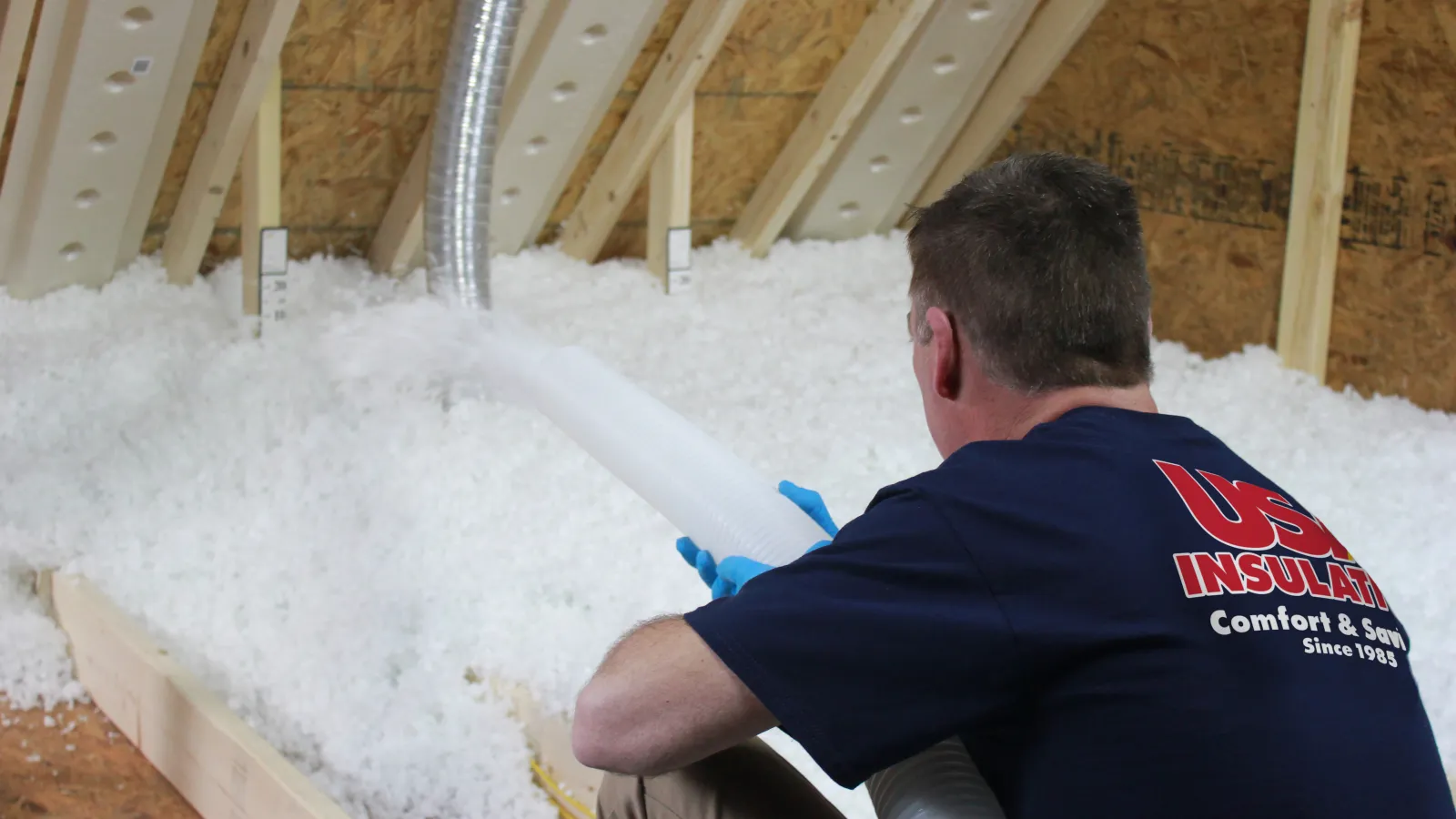Blown-in insulation has become a go-to option for homeowners looking to boost their home's energy efficiency and comfort. In this guide, we'll delve into the advantages and uses of blown-in insulation, providing you with insights into why it could be the ideal solution for your insulation needs.
What is Blown-In Insulation?
Blown-in insulation, often referred to as loose-fill insulation, consists of tiny particles of fiber, foam, or other materials. Using specialized equipment, these particles are expertly blown into spaces, ensuring comprehensive and even coverage. This technique excels at insulating those tricky, hard-to-reach spots and enhances the insulation of existing structures without causing major disruptions.
Types of Blown-In Insulation
Cellulose Insulation
Cellulose insulation is made from recycled paper products, primarily newspaper. It is treated with fire retardants to enhance its safety. This type of insulation is eco-friendly and offers excellent thermal and sound insulation properties.
Fiberglass Insulation
Fiberglass insulation consists of fine glass fibers. It is a common choice due to its affordability and effectiveness in reducing heat transfer. Fiberglass insulation is also resistant to moisture, making it suitable for various applications.
Mineral Wool Insulation
Mineral wool, also known as rock wool or slag wool, is made from volcanic rock or industrial waste. It has excellent fire resistance and soundproofing qualities, making it a versatile option for both residential and commercial buildings.
The Big Benefits of Blown-In Insulation
Improved Energy Efficiency
Blown-in insulation helps to create a more energy-efficient home by reducing heat loss in the winter and heat gain in the summer. This improved thermal performance can lead to lower energy bills and a reduced carbon footprint.
Enhanced Comfort
By maintaining a consistent indoor temperature, blown-in insulation contributes to a more comfortable living environment. It minimizes drafts and cold spots, ensuring that every room in your home remains cozy year-round.
Noise Reduction
The dense composition of blown-in insulation helps to dampen sound transmission, reducing noise from outside and between rooms. This can be particularly beneficial in homes located in busy or noisy areas.
Eco-Friendly Options
Many types of blown-in insulation, such as cellulose, are made from recycled materials, making them an environmentally friendly choice. Opting for eco-friendly insulation can help reduce your home's impact on the planet.
Fire and Pest Resistance
Blown-in insulation materials are often treated to be fire-resistant and can help deter pests. This added protection can enhance the safety and longevity of your home.
Where Blown-In Insulation is Primarily Used
Attics
Attics are one of the most common areas for blown-in insulation. The material can be easily blown into the attic space, filling gaps and providing a comprehensive thermal barrier. This helps prevent heat loss through the roof and reduces the strain on your heating and cooling systems.
Walls
Blown-in insulation can be installed in both exterior and interior walls. It is particularly useful for retrofitting older homes with inadequate insulation. By filling the wall cavities, blown-in insulation improves the overall thermal performance and soundproofing of the home.
Floors
Insulating floors with blown-in insulation can help reduce heat loss to the ground and improve overall comfort, especially in homes with crawl spaces or unheated basements. This application is also beneficial for minimizing noise transmission between floors.
Basements and Crawl Spaces
Blown-in insulation can be used to insulate basements and crawl spaces, creating a more comfortable and energy-efficient home. Proper insulation in these areas can help prevent moisture issues and improve indoor air quality.
How Blown-In Insulation Improves Energy Efficiency
Air Sealing
One of the key benefits of blown-in insulation is its ability to effectively seal air leaks. The loose-fill particles conform to any space, filling gaps and cracks that might otherwise allow air to escape. This improved air sealing reduces drafts and helps maintain a consistent indoor temperature.
Thermal Resistance (R-Value)
Blown-in insulation provides a high R-value, which measures the material's resistance to heat flow. A higher R-value indicates better insulating performance. By achieving the recommended R-value for your region, you can maximize your home's energy efficiency and comfort.
Reducing HVAC Load
With proper insulation, your heating and cooling systems don't have to work as hard to maintain a comfortable temperature. This reduced load can extend the lifespan of your HVAC equipment and lower your energy bills.
DIY vs. Professional Installation
DIY Installation
While some homeowners may consider installing blown-in insulation themselves, it's important to weigh the pros and cons. DIY installation can be cost-effective, but it requires specialized equipment and knowledge to ensure proper coverage and effectiveness.
Professional Installation
Hiring a professional insulation contractor ensures that the job is done correctly and safely. Professionals have the experience and tools to properly install blown-in insulation, maximizing its benefits. Additionally, they can assess your home's specific needs and recommend the best type of insulation for your situation.
The Last Word
Blown-in insulation offers numerous benefits, from improved energy efficiency and comfort to noise reduction and eco-friendliness. Whether you're looking to upgrade your attic insulation or retrofit your walls, blown-in insulation is a versatile and effective solution.
Those interested in learning more or scheduling an installation can request a free consultation from one of our insulation experts. Our team at USA Insulation is here to help you create a more comfortable and energy-efficient home. Contact us today to get started!



